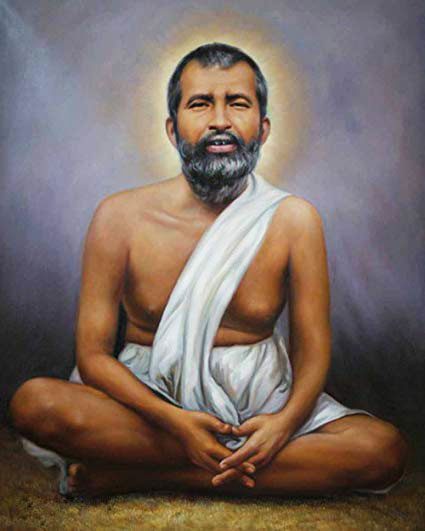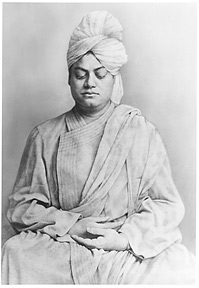Introduction
In the realm of spiritual practices, Tantra Yoga stands as a path that embraces the holistic integration of body, mind, and spirit. Often misunderstood and associated with its sensual aspects, Tantra Yoga goes far beyond that, offering a profound system of self-discovery and transformation.
At its core, Tantra Yoga explores the synergy between the physical and the spiritual, and meditation plays a crucial role in this journey. In this blog, we will delve into the beautiful connection between Tantra Yoga and the art of meditation, exploring their principles, benefits, and practices that pave the way to self-realization.
Table of Contents
The Yogic Philosophy of “Tantra Yoga and the Art of Tantric Meditation”
Tantra Yoga and the art of meditation offer a transformative journey of self-discovery and spiritual growth. Through the synergy of Tantra Yoga and meditation, individuals can tap into their unlimited potential and experience life in its entirety. By embracing the principles and practices of Tantra Yoga, we can merge the physical and the spiritual, unlocking profound unity and love.
Understanding Tantra Yoga
Tantra Yoga originates from ancient Indian wisdom and philosophy. It embraces the concept of Shakti, the divine feminine energy, and recognizes the importance of energy in all aspects of life. Tantra Yoga emphasizes the integration of opposites, recognizing that the physical and spiritual realms are interconnected. Rather than suppressing desires and experiences, Tantra Yoga seeks to embrace and transform them into sources of spiritual growth.
Exploring Meditation in Tantra Yoga
Meditation is a vital component of Tantra Yoga practice. It is not solely about relaxation or focusing the mind; instead, it encompasses a broader scope of awareness and contemplation. In Tantra Yoga, meditation is a means to access higher states of consciousness and transcend the limitations of the ego. It invites practitioners to go beyond concentration and delve into the depths of their being, cultivating self-awareness and a profound connection with the present moment.
The Tantric Perspective on Meditation

Tantra Yoga offers a unique perspective on meditation, recognizing the full spectrum of human experience as a path to spiritual realization. Tantric meditation embraces the senses, emotions, and even desires as gateways to higher consciousness. It encourages practitioners to embrace and transcend duality, recognizing the divine presence in all aspects of life. By merging the physical and the spiritual, Tantra Yoga opens the doors to a deep understanding of oneself and the interconnectedness of all beings.
How To Practice Tantric Meditation
Practicing tantric meditation involves a combination of techniques, intentions, and an open-minded approach. Here are some steps to guide you in practicing tantric meditation:
Set a Sacred Space
Find a quiet and peaceful space where you can meditate without interruptions. Create an ambiance that feels sacred to you, using elements such as candles, incense, or meaningful objects.
Establish Intentions

Set clear intentions for your meditation practice. Reflect on what you wish to cultivate or explore through the practice, whether it’s deepening self-awareness, connecting with higher consciousness, or transforming specific aspects of your life.
Connect with the Breath
Begin by bringing your attention to your breath. Take slow, deep breaths, allowing the breath to flow naturally. Use the breath as an anchor to the present moment, allowing any distractions or thoughts to gently dissolve as you focus on the sensation of breathing.
Engage the Senses
Tantric meditation encourages the engagement of the senses. As you meditate, bring awareness to the sensations in your body, the sounds around you, and the overall sensory experience. Allow yourself to fully immerse in the present moment, embracing the richness of sensory perception.
Work with Mantras or Chants
Mantras or chants can be powerful tools in tantric meditation. Choose a mantra or chant that resonates with you, whether it’s a traditional Sanskrit mantra or a simple phrase with personal meaning. Repeat the mantra silently or aloud, focusing your attention on the sound and vibration it creates within you.
Visualize Symbols or Yantras
Yantras are geometric symbols used in tantric meditation. Choose a yantra that represents a particular energy or intention you wish to cultivate. Visualize the yantra in your mind’s eye, allowing its form and energy to merge with your consciousness.
Harness the Power of Imagery
Tantric meditation often incorporates vivid imagery and visualization. Engage your imagination to create images that evoke a specific experience or feeling within you. For example, you may visualize yourself surrounded by radiant light, or you may imagine yourself merging with a natural element such as water or fire.
Cultivate Sensual Awareness
Tantric meditation acknowledges the sacredness of the body and its sensory experiences. Bring mindful awareness to the sensations in your body, whether it’s the touch of your hands, the feeling of your breath, or the subtleties of energy flowing within you. Embrace sensuality as a means to deepen your connection with yourself and the present moment.
Embrace the Flow of Energy
Tantric meditation works with the flow of energy within the body. Visualize the subtle energy centers, known as chakras, along the spine, and imagine them being activated and harmonized. Allow the energy to flow freely, experiencing a sense of openness and expansiveness.
Cultivate Loving-Kindness and Compassion
In tantric meditation, cultivate loving-kindness and compassion towards yourself and others. Extend heartfelt wishes for the well-being and happiness of all beings, embracing the interconnectedness of all existence.
Benefits of Tantric Meditation
Tantric meditation, as a powerful practice within Tantra Yoga, offers a range of benefits for individuals who engage in it consistently. Here are some of the benefits of Tantric meditation:
Enhanced Self-Awareness
Tantric meditation cultivates deep self-awareness by encouraging individuals to explore their thoughts, emotions, and sensations without judgment. This heightened self-awareness allows for a better understanding of one’s true nature and helps identify and release limiting beliefs or patterns.
Emotional Balance
Through Tantric meditation, practitioners learn to embrace and navigate their emotions with greater ease. It promotes emotional intelligence, enabling individuals to develop a healthy relationship with their emotions, and find balance and equanimity in their daily lives.
Stress Reduction
Regular practice of Tantric meditation helps reduce stress and anxiety. By cultivating a state of deep relaxation and calm, it allows individuals to release tension, recharge their energy, and experience a sense of inner peace and tranquility.
Heightened Intimacy and Connection
Tantric meditation emphasizes deepening connections with oneself and others. By cultivating presence, vulnerability, and authenticity, it enhances intimate relationships, fosters deeper connections with loved ones, and promotes compassionate and heart-centered interactions.
Spiritual Growth and Awakening
Tantric meditation is a potent tool for spiritual growth and self-realization. It opens the door to higher states of consciousness, expands awareness, and helps individuals connect with their spiritual essence. It can lead to a profound sense of unity, oneness, and connection with the divine.
Expanded Consciousness
Tantric meditation allows individuals to transcend ordinary states of consciousness and access expanded states of awareness. It helps dissolve boundaries and limitations, providing a glimpse into the interconnectedness of all things and the vastness of existence.
Healing and Transformation
Tantric meditation supports healing on various levels—physical, emotional, and spiritual. It can help release energetic blockages, promote self-healing, and facilitate personal transformation. By working with the subtle energies of the body, Tantric meditation promotes vitality, balance, and overall well-being.
Heightened Sensory Perception
Through the practice of Tantric meditation, individuals can develop heightened sensory perception. This enables a deeper appreciation of the present moment, the beauty of nature, and the richness of sensory experiences.
Cultivation of Presence and Mindfulness
Tantric meditation teaches individuals to be fully present in the here and now. It fosters mindfulness, allowing practitioners to engage with life’s experiences more consciously, with greater focus, clarity, and appreciation.
Joy and Fulfillment
Tantric meditation can lead to a profound sense of joy, inner fulfillment, and contentment. By tapping into the innate bliss within oneself and aligning with the flow of life, individuals experience a deep sense of purpose and find joy in the present moment.
Incorporating Tantric Meditation into Daily Life

The true essence of Tantra Yoga lies in its integration into everyday life. Practitioners are encouraged to bring the principles of Tantric meditation into their daily routines, infusing mindfulness and awareness into simple activities. Tantric rituals and practices can be incorporated to foster personal growth and spiritual development. By cultivating a tantric mindset, one learns to see the divine in all experiences and interactions, bringing a deeper sense of meaning and fulfillment to life.
Tantric meditation stands apart from Other Meditation
Tantric meditation stands apart from other forms of meditation by embracing the full spectrum of human experience. It encourages the exploration and transformation of desires, emotions, and senses as gateways to spiritual awakening. By merging the physical and spiritual realms, Tantric meditation fosters a deep understanding of oneself and the interconnectedness of all beings.
FAQs on “Tantra Yoga and the Art of Meditation”
What is Tantra Yoga?
Tantra Yoga is a spiritual practice that originated in ancient India. It embraces the integration of body, mind, and spirit, recognizing the importance of energy and the divine feminine principle, Shakti. Tantra Yoga goes beyond physical pleasure and explores the transformation of desires and experiences into sources of spiritual growth.
How does Tantra Yoga differ from other forms of yoga?
Tantra Yoga stands out by embracing the full spectrum of human experience and recognizing the interconnectedness of the physical and spiritual realms. It does not seek to suppress desires or experiences, but rather harnesses them as a means for spiritual awakening and self-realization.
What role does meditation play in Tantra Yoga?
Meditation is an integral part of Tantra Yoga. It is a practice that allows individuals to go beyond concentration and enter into a state of deep awareness and contemplation. Through meditation, practitioners cultivate self-awareness, connect with the present moment, and access higher states of consciousness.
How does Tantric meditation differ from other meditation practices?
Tantric meditation differs from other forms of meditation by embracing the full range of human experience. It encourages practitioners to engage their senses, emotions, and desires as gateways to higher consciousness. Tantric meditation merges the physical and the spiritual, transcending duality and allowing for a profound understanding of oneself and the interconnectedness of all beings.
What are some common techniques used in Tantric meditation?
Tantric meditation incorporates various techniques, such as mantra meditation, where sacred sounds or chants are repeated to elevate consciousness. Yantra meditation utilizes geometric shapes and symbols as focal points for concentration. Kundalini meditation aims to awaken the dormant spiritual energy within, leading to transformation and spiritual growth.
What are the benefits of practicing Tantric meditation?
Practicing Tantric meditation brings numerous benefits. It deepens self-awareness, cultivates love and connection, and expands consciousness. It helps individuals find inner peace, balance, and a sense of purpose in life. Tantric meditation also facilitates personal growth, spiritual development, and a deeper understanding of oneself and the universe.
Can anyone practice Tantra Yoga and meditation?
Yes, Tantra Yoga and meditation are accessible to anyone who is interested and open to the practice. It is important to find qualified teachers or resources to guide you in your journey and ensure a safe and authentic practice.
How can I incorporate Tantric meditation into my daily life?
Integrating Tantric meditation into daily life involves infusing mindfulness and awareness into everyday activities. You can practice mindfulness while eating, walking, or engaging in daily routines. Additionally, incorporating tantric rituals and practices can further support personal growth and spiritual development.
Is Tantra Yoga only about sexuality?
While Tantra Yoga is often associated with its sensual aspects, it goes far beyond sexuality. Tantra Yoga encompasses a comprehensive system of spiritual practices that aim to integrate all aspects of life, including the physical, emotional, mental, and spiritual realms. It recognizes sexuality as a part of human experience but focuses on its transformation for spiritual growth.
Is Tantra Yoga a religion?
Tantra Yoga is not a religion but rather a spiritual practice. It is a path that can be embraced by individuals from various religious backgrounds or those who do not follow any specific religious beliefs. Tantra Yoga offers principles and practices that can deepen one’s spiritual connection and provide a framework for personal growth and self-realization.
Conclusion
Tantra Yoga and the art of meditation offer a transformative path to self-discovery, spiritual growth, and deep connection with the world around us. Tantra Yoga, often misunderstood as purely focused on sexuality, encompasses a holistic approach that integrates body, mind, and spirit. Through meditation, practitioners can access higher states of consciousness, cultivate self-awareness, and transcend the limitations of the ego.
It is important to approach Tantra Yoga and meditation with respect and seek guidance from qualified teachers or resources to ensure a safe and authentic practice. By embracing Tantra Yoga and the art of meditation, we embark on a transformative journey that invites us to awaken our true potential, find harmony within ourselves, and experience the interconnectedness of all existence.
References
Goyal, M.; Singh, S.; Sibinga, E. M.; Gould, N. F.; Rowland-Seymour, A.; Sharma, R.; Berger, Z.; Sleicher, D.; Maron, D. D.; Shihab, H. M.; Ranasinghe, P. D.; Linn, S.; Saha, S.; Bass, E. B.; Haythornthwaite, J. A. (2014). “Meditation Programs for Psychological Stress and Well-being: A Systematic Review and Meta-analysis”. JAMA Internal Medicine. 174 (3): 357–368. doi:10.1001/jamainternmed.2013.13018. PMC 4142584. PMID 24395196.
Gangadharan & Hemamalini 2021, p. 70.
Vishnu Devananda, Swami (1995). Meditation and mantras. Delhi: Motilal Banarsidass. pp. 82–83. ISBN 81-208-1615-3. OCLC 50030094
